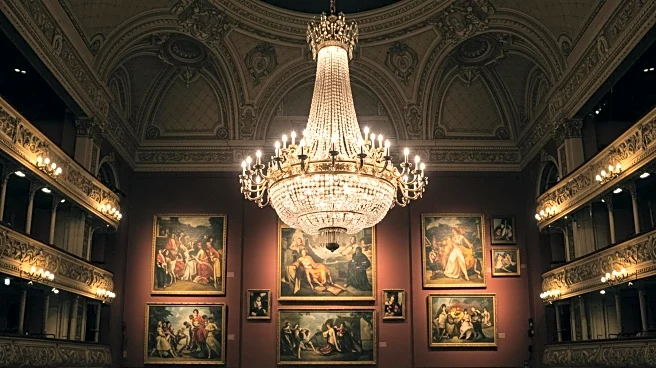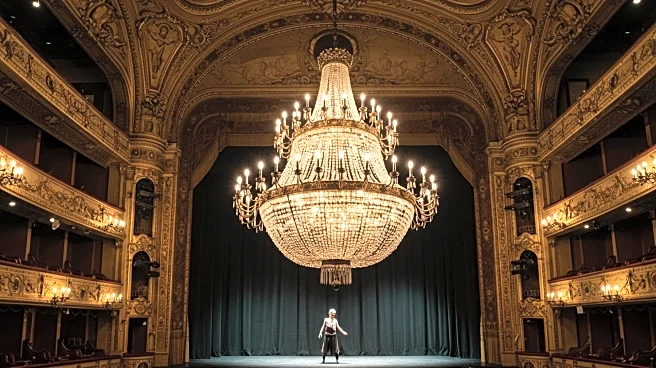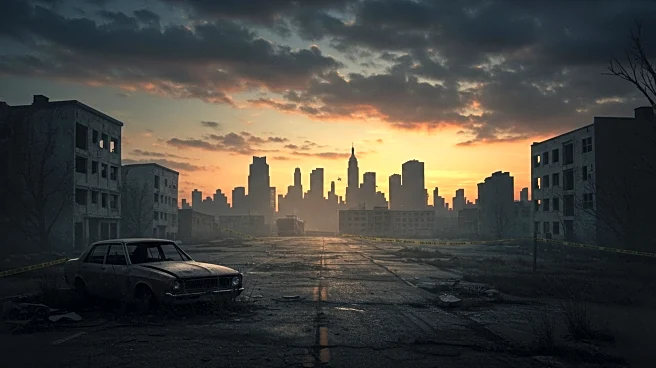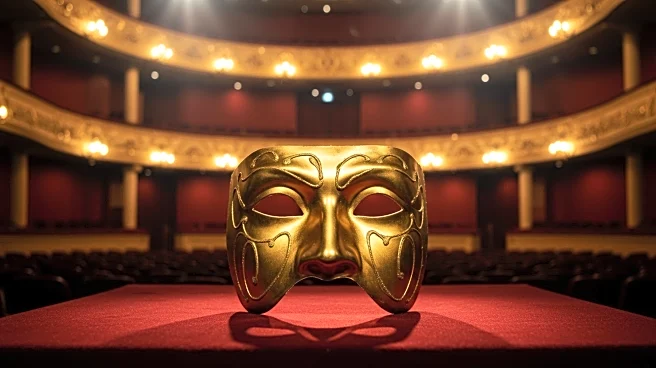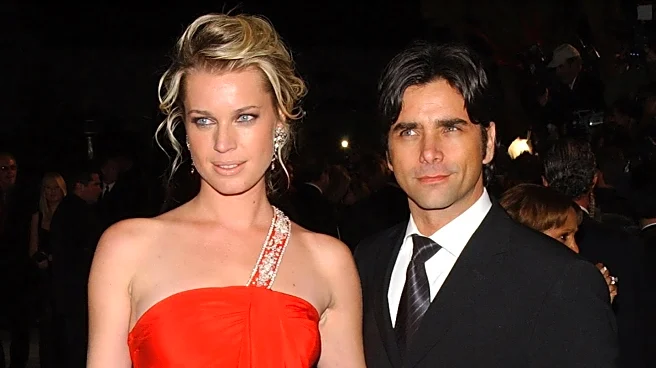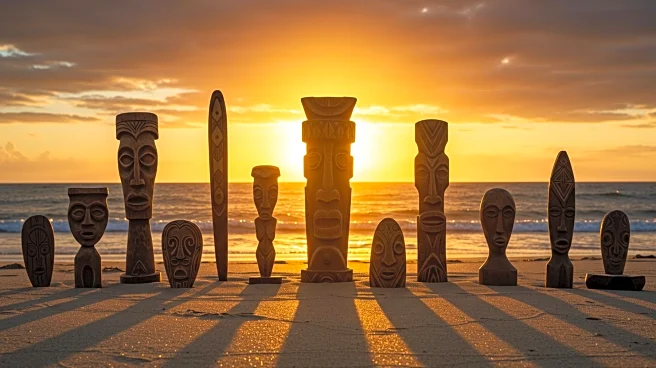What's Happening?
An immersive production titled 'Masquerade' is set to reimagine Andrew Lloyd Webber's 'Phantom of the Opera' with contributions from major artists. The production, which begins previews this week, is located at a renovated art-supply store near Central Park South in New York. It is inspired by the interactive show 'Sleep No More' and allows attendees to experience the story from the perspective of the 'Opera Ghost.' The artistic director, Shai Baitel, has curated installations by artists such as Marina Abramović, Kenny Scharf, and Adam Pendleton to delve into the Phantom's psyche. The production is not a traditional stage play but an immersive experience where the audience is part of the scene, surrounded by artworks that reflect the Phantom's character and environment.
Why It's Important?
This production represents a significant innovation in theater by integrating contemporary art into a classic musical narrative. It offers a new way for audiences to engage with the story, potentially attracting both theater enthusiasts and art lovers. The involvement of renowned artists adds a layer of cultural prestige and could influence future theatrical productions to incorporate similar artistic collaborations. This approach may also broaden the appeal of theater to younger, more diverse audiences who are interested in immersive and interactive experiences.
What's Next?
The production will run from August 22 through October 26, 2025, in New York. As it opens, it will be interesting to observe audience reactions and critical reviews, which could impact its potential for future runs or adaptations. The success of 'Masquerade' might encourage other theater productions to explore similar immersive and interdisciplinary approaches, potentially reshaping the landscape of live performance art.
Beyond the Headlines
The integration of contemporary art into a theatrical setting raises questions about the boundaries between different art forms and how they can be blended to create new experiences. This production challenges traditional theater norms and could inspire discussions about the role of art in storytelling and the potential for cross-disciplinary collaborations to enhance cultural narratives.
